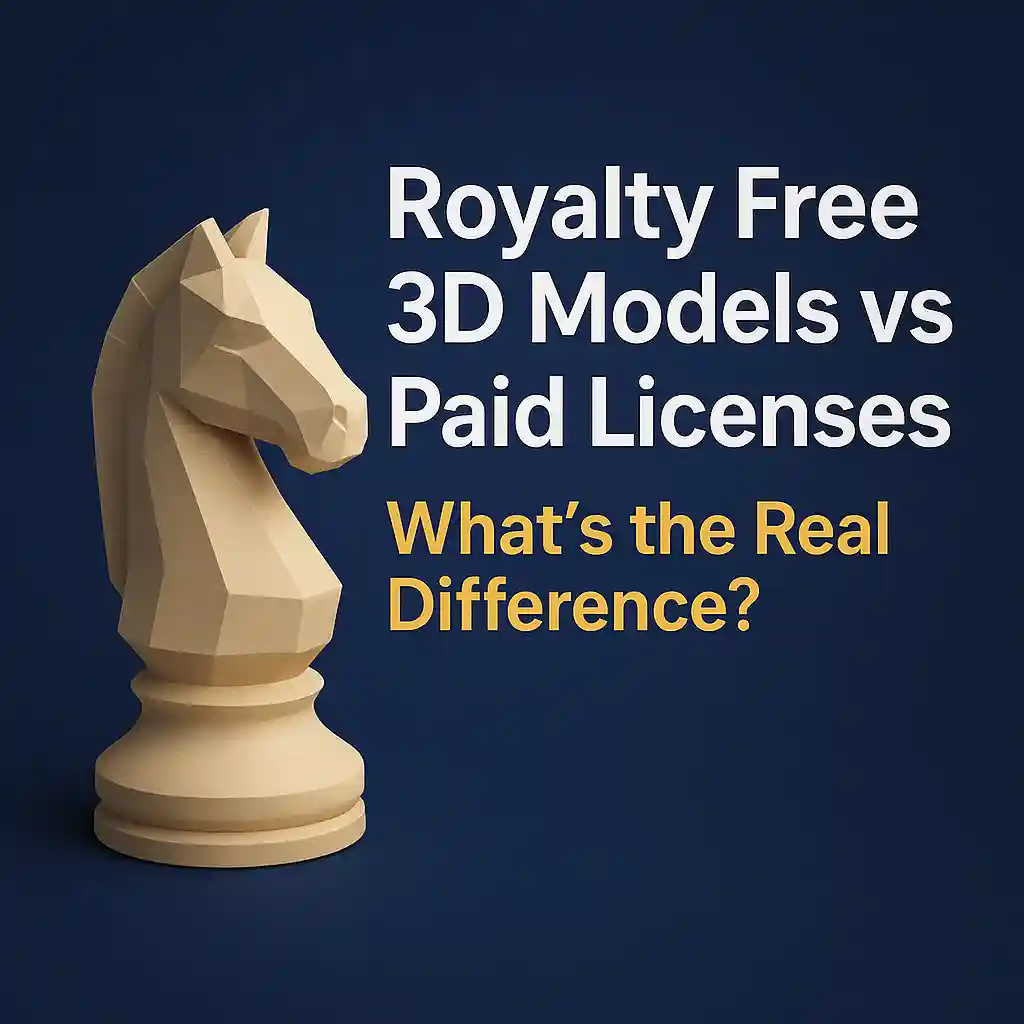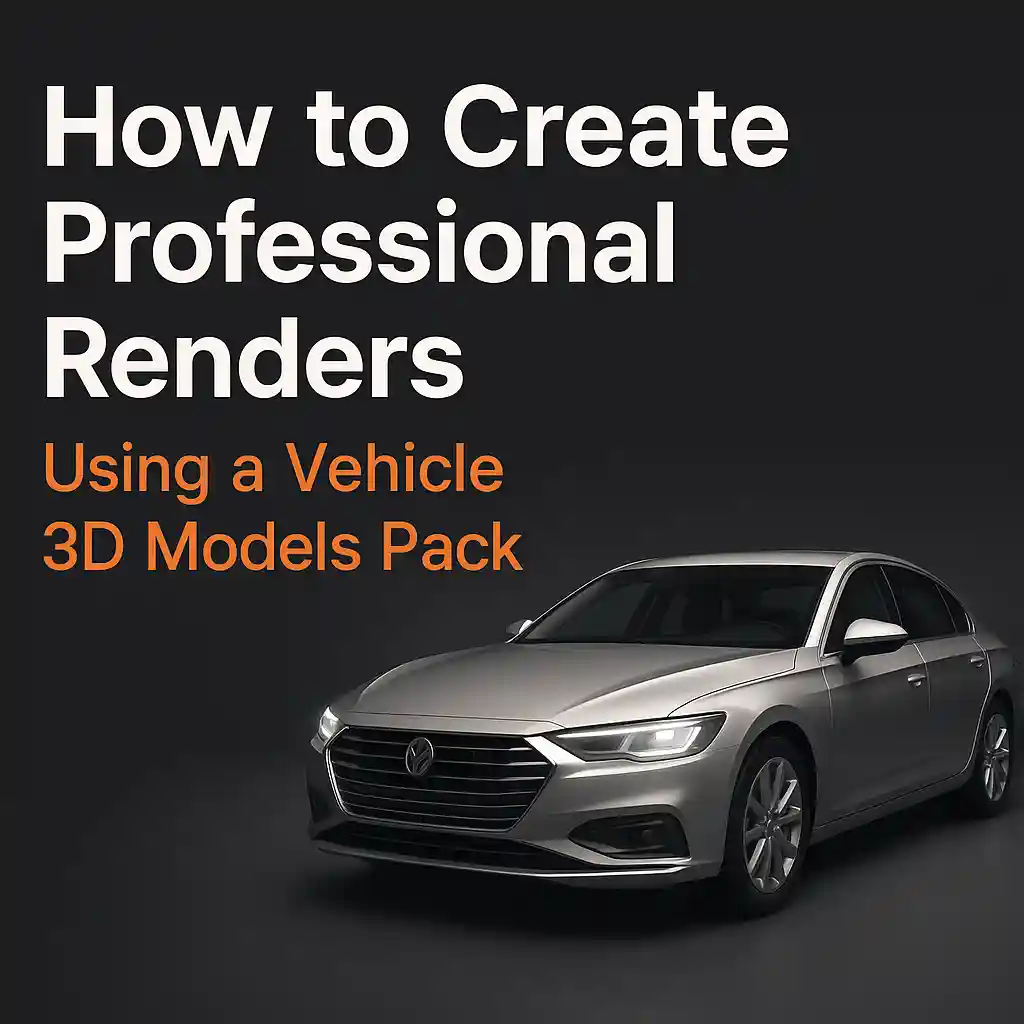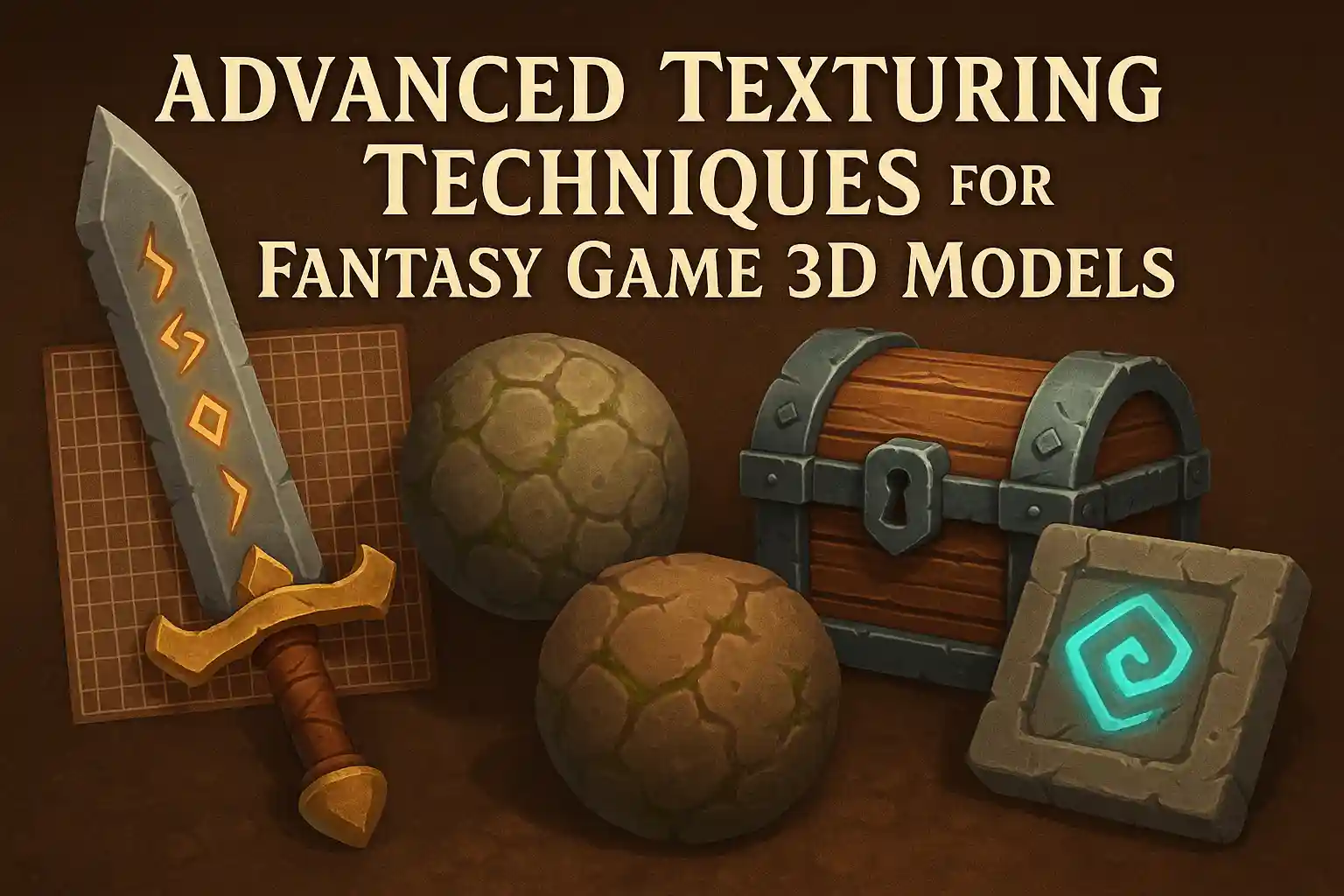The Pitfalls of Free 3D Assets and How to Overcome Them
by Animatics Asset Store in Blog on October 16, 2025Every game developer loves free stuff. Who wouldn’t? You download a character model, drop it into your project, and boom—instant progress. But then reality hits you hard. These free 3D assets crashes your engine. The textures look terrible. The license terms confuse you. Suddenly, your “free” asset becomes an expensive mistake.
The truth is harsh but necessary. Free 3D assets come with hidden costs that most developers discover too late. This guide reveals those pitfalls and shows you how to avoid them completely.
Understanding the Free Asset Landscape
The internet overflows with free 3D models. Thousands of websites promise high-quality content at zero cost. Some deliver on that promise. Many others don’t.
Quality varies wildly across free asset platforms. One model works perfectly. The next one breaks your entire scene. This inconsistency wastes countless development hours.
The global 3D digital asset market was estimated at USD 28.3 billion in 2024 and is projected to reach USD 51.8 billion by 2029. This massive growth attracts both legitimate creators and opportunistic uploaders.
The License Nightmare Nobody Talks About
Using an unlicensed 3D asset means violating the terms of the license and infringing on the intellectual property rights of the creator. Yet most developers skip reading license agreements entirely.
Free doesn’t always mean unrestricted use. Many free 3D assets come with significant limitations that can destroy your commercial projects.
Common License Restrictions
Some assets may be restricted to non-commercial use, meaning they cannot be used for commercial purposes or for-profit projects. Your indie game suddenly becomes illegal if you sell it.
Attribution requirements create unexpected complications. Some licenses require the buyer to provide credit to the asset creator when using the asset in a project. Managing credits for hundreds of assets becomes impossible.
Some licenses prohibit the buyer from reselling or redistributing the asset to others. This restriction affects asset packs and modding communities significantly.
The Copyright Minefield
Creators should be careful not to infringe on the intellectual property rights of others when creating and selling 3D assets. Using copyrighted images, logos, or characters in your assets without permission can result in legal consequences.
Many free assets violate existing copyrights. Uploaders rip models from commercial games and distribute them as “free resources.” Using these assets invites lawsuits and takedown notices.
The consequences of improper licensing can be severe: Lawsuits and legal fees that can drain both your finances and creative energy, project delays when assets must be replaced mid-development, damage to professional reputation.
Technical Quality Issues That Kill Projects
Free assets rarely undergo quality control processes. Anyone can upload anything. Your project suffers the consequences.
Polygon Count Problems
Optimization separates amateur assets from professional ones. Free models often contain millions of unnecessary polygons that crush performance.
Mobile games require strict polygon budgets. Desktop games need reasonable limits too. Unoptimized free assets ignore these realities completely.
Testing reveals problems too late in development. Your frame rate drops mysteriously. Investigation shows a single free asset using 500,000 polygons for a background prop.
Broken UV Mapping
Texture coordinates determine how images wrap around 3D models. Poor UV mapping creates visual disasters that frustrate players.
Free assets frequently ship with terrible UV layouts. Textures stretch awkwardly. Seams appear in obvious places. Fixing these issues takes hours per model.
Some free models lack UV maps entirely. You download what looks like a complete asset. Then you discover it cannot accept textures at all.
Missing or Incompatible Materials
Material systems vary between game engines. Unity uses different shaders than Unreal Engine. Blender materials rarely translate to either platform.
Free 3D assets often include no material information. You receive geometry without any surface properties. Creating materials from scratch negates the time-saving benefit of free assets.
Placeholder materials mislead developers frequently. Preview images show beautiful renders. Downloaded assets arrive with flat gray shading and missing textures.
File Format Compatibility Headaches
Technical standards and interoperability play crucial roles in shaping the 3D digital asset market but also act as significant restraints. The lack of universally adopted standards leads to market fragmentation and compatibility issues.
Format Conversion Losses
Different 3D software uses proprietary file formats. Converting between formats loses critical data regularly.
FBX claims universal compatibility. Reality proves more complicated. Animations break during conversion. Materials disappear mysteriously. Bone hierarchies corrupt themselves.
OBJ format handles basic geometry reliably. It lacks support for advanced features like rigging, animation, and complex materials. Free OBJ models work for static props only.
Version Mismatches
Software versions change constantly. Free assets created years ago may not import into modern engines properly.
Legacy file formats cause unexpected problems. Your engine supports the format theoretically. Practically, older versions contain incompatibilities that break imports.
The Hidden Cost of “Free”
Time represents your most valuable resource. Free 3D assets consume enormous amounts of time through various hidden costs.
Cleanup and Optimization Time
Every free asset requires inspection and modification. Non-existent quality control guarantees problems exist.
Removing duplicate vertices takes minutes per model. Fixing normals adds more time. Optimizing polygon counts requires expertise and patience.
These small time investments accumulate quickly. Ten models need two hours each of cleanup. That’s twenty hours of unpaid labor “saved” by using free assets.
Integration Challenges
Free assets rarely follow consistent naming conventions. Files arrive with cryptic names like “mesh_final_v3_REAL.fbx” that reveal nothing about their contents.
Organizing hundreds of free assets from different sources creates chaos. Which texture belongs to which model? Where did you download this asset originally?
Scale inconsistencies cause frustration. One free asset measures in meters. Another uses centimeters. A third exists at completely arbitrary scale.
Learning From Successful Games
Understanding why top games succeed reveals valuable lessons about asset management and quality standards.
Honor of Kings: The #1 Mobile Game
Honor of Kings by Tencent retained its position as the top-grossing mobile game worldwide, continuing its dominance from the previous period. Its success stems from multiple factors working together perfectly.
What Makes It Number One:
Visual polish defines the game’s appeal. Every character model receives professional attention. Textures shine with quality. Animations flow smoothly.
Honor of Kings maintained its top revenue position, attributed to Tencent’s ongoing content innovation and strategic IP collaborations. Regular updates keep players engaged continuously.
Asset Quality Standards:
Professional 3D artists create every asset specifically for the game. No generic free models appear anywhere in Honor of Kings.
Consistent art direction unifies thousands of individual assets. Players experience visual coherence that free asset collections cannot match.
Areas for Improvement:
Even successful games face challenges. Some players report visual clutter during team fights. Particle effects sometimes overwhelm actual gameplay.
The high visual fidelity demands powerful devices. Older phones struggle with performance despite optimization efforts.
Garena Free Fire: Accessibility Champion
Garena Free Fire’s rise to the second position worldwide highlighted its enduring popularity, particularly in markets like India, Brazil, and Indonesia.
Success Factors:
Its success is driven by regular updates and engaging battle royale gameplay, further boosted in May 2025 by the Solarush! event celebrating its 8th anniversary.
Asset optimization enables play on low-end devices. Free Fire runs smoothly where competitors crash. This accessibility expands the player base dramatically.
Stylized graphics age better than realistic ones. The art direction remains appealing years after launch. Lower polygon counts support this visual approach.
Smart Asset Choices:
The development team prioritizes performance over visual complexity. Character models use reasonable polygon budgets. Environment assets scale appropriately for mobile hardware.
Regular content updates introduce new assets strategically. Each addition undergoes rigorous optimization before release.
Room for Enhancement:
Some players desire more visual detail. The stylized approach limits realism. Balancing accessibility with visual advancement creates ongoing challenges.
ROBLOX: User-Generated Content King
ROBLOX maintained its strong momentum at #3, especially in India, Brazil, and Indonesia. Its unique approach to assets revolutionizes game development.
Platform Strengths:
This success in May 2025 was powered by branded experiences like The Weeknd Hub and Polo Beach by Ralph Lauren, showcasing the power of cross-industry partnerships.
User-created assets drive endless content variety. Millions of creators contribute models constantly. This democratized creation sustains massive engagement.
Simple building tools enable non-professionals to create assets. The platform handles technical complexity automatically.
Asset Management Strategy:
Standardized asset formats ensure compatibility across all experiences. Users never worry about file format conversions.
Automated quality checks prevent some common problems. The system flags obviously broken assets before publication.
Improvement Opportunities:
Quality control remains inconsistent for user-generated content. Some assets break games or contain inappropriate content.
Professional developers sometimes struggle with platform limitations. Advanced features available in traditional game engines remain inaccessible.
Smart Alternatives to Free Assets
Quality asset sources exist that balance cost with reliability. Smart developers mix free and paid resources strategically.
Curated Free Asset Platforms
Some platforms curate free content carefully. Quality standards reduce but don’t eliminate problems.
The Animatics Asset Store focuses specifically on game-ready free 3d assets for developers. Their curated collections undergo quality checks before listing. Models arrive optimized for game engines with proper documentation.
Community-driven platforms benefit from user feedback. Popular assets receive more scrutiny. Reviews warn about potential problems.
Strategic Free Asset Usage
Prototype phases benefit most from free assets. Gameplay testing doesn’t require final art quality. Placeholder models serve this purpose well.
Background props work better as free assets than hero characters. Players notice quality issues on main characters immediately. Distant objects receive less visual attention.
Concept validation justifies free asset use. Test your game idea before investing in custom art. Free assets enable this testing economically.
Building Reliable Asset Pipelines
Professional development requires reliable workflows. Depending entirely on free assets creates unsustainable processes.
Quality Standards and Checklists
Create documented standards for asset acceptance. Every model must pass these checks before entering your project.
Polygon count limits prevent performance problems. Maximum values vary by asset type and platform. Enforce these limits strictly.
Material requirements ensure visual consistency. Specify required texture maps and shader compatibility upfront.
Asset Library Organization
Systematic organization prevents chaos. Consistent folder structures help teams locate assets quickly.
Naming conventions eliminate confusion. Descriptive names reveal asset purpose immediately. “character_hero_idle_01.fbx” beats “model_final.fbx” every time.
Version control tracks asset modifications. When problems emerge, reverting to previous versions saves projects.
Documentation Requirements
Crediting and licensing 3D assets is not only a matter of courtesy and professionalism, but also a legal obligation.
Maintain detailed records for every asset. Source URLs, download dates, and license terms must remain accessible.
Screenshot license agreements during download. Website terms change unexpectedly. Original license terms remain valid regardless.
Creating Sustainable Asset Strategies
Long-term success requires moving beyond dependence on free resources. Sustainable approaches balance multiple sources strategically.
Budget Allocation
Allocate asset budgets early in planning. Free assets supplement rather than replace paid content.
Prioritize spending on player-facing elements. Hero characters justify investment. Background trees might use free alternatives.
Team Skill Development
Invest in team training for asset creation. Basic modeling skills reduce free asset dependence.
Understanding asset optimization helps regardless of source. Even paid assets sometimes need adjustment.
Hybrid Approaches
Successful developers combine free assets, paid marketplace content, and custom creation. Each source serves different needs.
Free assets accelerate prototyping. Paid assets provide production quality. Custom assets deliver unique visual identity.
Conclusion: Making Smart Asset Decisions
Free 3D assets serve valuable purposes when used appropriately. They accelerate prototyping, enable learning, and reduce costs during concept validation.
However, relying entirely on free assets creates serious problems. License violations risk legal action. Technical quality issues slow development. Integration challenges waste time that supposedly gets saved.
The most successful games use carefully managed asset pipelines. They maintain quality standards regardless of asset source. Everything is documented meticulously. They plan strategically for long-term success.
Honor of Kings leads the pack, generating over $2.5 billion in 2025. This success requires professional asset quality that free resources rarely provide.
Your asset strategy should evolve with your project. Early development tolerates more free content. Production phases demand higher quality standards. Post-launch updates benefit from established workflows.
Remember that assets represent tools, not solutions. The best 3D model cannot fix poor gameplay. Focus on creating engaging experiences. Use assets—free or paid—to support that primary goal.
Smart developers recognize free assets’ limitations while appreciating their benefits. They build reliable processes that incorporate multiple asset sources strategically. They maintain professional standards throughout development.
Your game deserves better than whatever random free assets you find online. Plan carefully, choose wisely, and build sustainably. Success follows these principles consistently.






